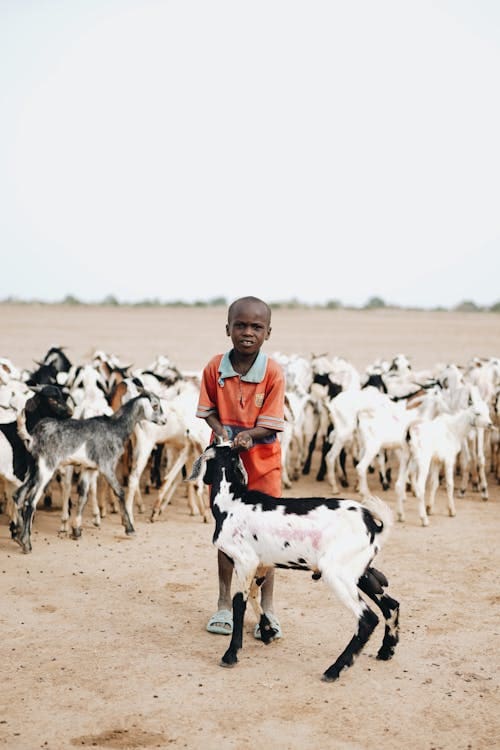
It Takes a Village: Caring for Orphans and Deprived Children
Introduction
The proverb “It takes a village to raise a child” encapsulates the idea that caring for children, especially orphans and deprived children, is a communal responsibility. This blog article, authored by Lulu Kwakye, explores how a collective approach can significantly improve the lives of these vulnerable children. By leveraging the strengths of community members, local organizations, and international support systems, we can create a nurturing environment that addresses the diverse needs of orphans and deprived children.
The Importance of Community Involvement
1. Social Support Networks
Communities provide a vital support network for orphans and deprived children, offering emotional and psychological stability that individual caregivers might struggle to deliver alone. Research by Bowlby (1969) on attachment theory highlights the importance of stable and consistent relationships in the healthy development of children. A supportive community can provide multiple attachment figures, including extended family members, neighbors, and teachers, who contribute to the child’s sense of security and belonging.
2. Resource Sharing
Raising a child requires substantial resources, which can be particularly challenging for caregivers of orphaned and deprived children. Communities can pool resources to provide essential needs such as food, clothing, and educational materials. A study by Miller and Rasco (2004) found that community resource sharing significantly alleviates the burden on individual caregivers, allowing for more comprehensive care.
Case Studies of Successful Community Involvement
1. The Nyaka AIDS Orphans Project in Uganda
The Nyaka AIDS Orphans Project in Uganda is a prime example of community-driven care for orphaned children. This organization was founded to support children who lost their parents to AIDS. The project employs a holistic approach, involving the entire community in providing education, healthcare, and emotional support. The success of Nyaka underscores the power of collective action in improving the lives of orphans (Nyaka AIDS Orphans Project, 2020).
2. SOS Children’s Villages
SOS Children’s Villages operate worldwide, offering family-like care for orphaned and abandoned children. Each village is a supportive community where children grow up in family homes with SOS parents, alongside other children in similar circumstances. This model emphasizes the role of the community in providing stable, loving environments for children, demonstrating the effectiveness of a village-based approach (SOS Children’s Villages, 2019).
Strategies for Effective Community Involvement
1. Education and Training
Educating community members about the unique needs of orphaned and deprived children is crucial. Training programs can equip caregivers, teachers, and community leaders with the skills necessary to provide effective support. Programs that include training in trauma-informed care, child development, and educational support can greatly enhance the quality of care provided (Richter et al., 2009).
2. Building Community-Based Support Systems
Establishing community-based organizations and support groups can facilitate the pooling of resources and the sharing of responsibilities. These groups can coordinate efforts to provide consistent support for orphaned and deprived children, ensuring that their needs are met comprehensively. Community centers can serve as hubs for these activities, offering a range of services from educational tutoring to counseling (Foster, 2002).
3. Partnerships with NGOs and Government Agencies
Forming partnerships with non-governmental organizations (NGOs) and government agencies can amplify the impact of community efforts. NGOs often bring expertise, resources, and funding that can bolster community initiatives. Government agencies can provide additional support through policy initiatives, funding, and infrastructure development. Collaborative efforts ensure that orphaned and deprived children receive well-rounded support (Cluver & Gardner, 2007).
Conclusion
Caring for orphaned and deprived children is a responsibility that extends beyond individual caregivers to the entire community. By fostering social support networks, sharing resources, and implementing community-based strategies, we can create a nurturing environment that addresses the diverse needs of these vulnerable children. The proverb “It takes a village to raise a child” is not just a saying but a call to action for communities worldwide to unite in support of their youngest and most vulnerable members.
References
Bowlby, J. (1969). Attachment and Loss: Vol. 1. Attachment. New York: Basic Books.
Cluver, L., & Gardner, F. (2007). Risk and Protective Factors for Psychological Well-Being of Children Orphaned by AIDS in Cape Town: A Qualitative Study of Children and Caregivers’ Perspectives. AIDS Care, 19(3), 318-325.
Foster, G. (2002). Understanding Community Responses to the Situation of Children Affected by AIDS: Lessons for External Agencies. UNICEF and International HIV/AIDS Alliance. Retrieved from https://data.unaids.org/Publications/IRC-pub02/jc621-understandingcommunityresponses_en.pdf
Miller, K. E., & Rasco, L. M. (2004). The Mental Health of Refugees: Ecological Approaches to Healing and Adaptation. Mahwah, NJ: Lawrence Erlbaum Associates.
Nyaka AIDS Orphans Project. (2020). Annual Report 2020. Retrieved from https://www.nyakaschool.org
Richter, L., Foster, G., & Sherr, L. (2009). Where the Heart Is: Meeting the Psychosocial Needs of Young Children in the Context of HIV/AIDS. The Hague: Bernard van Leer Foundation. SOS Children’s Villages. (2019). Annual Report 2019. Retrieved from https://www.sos-childrensvillages.org
